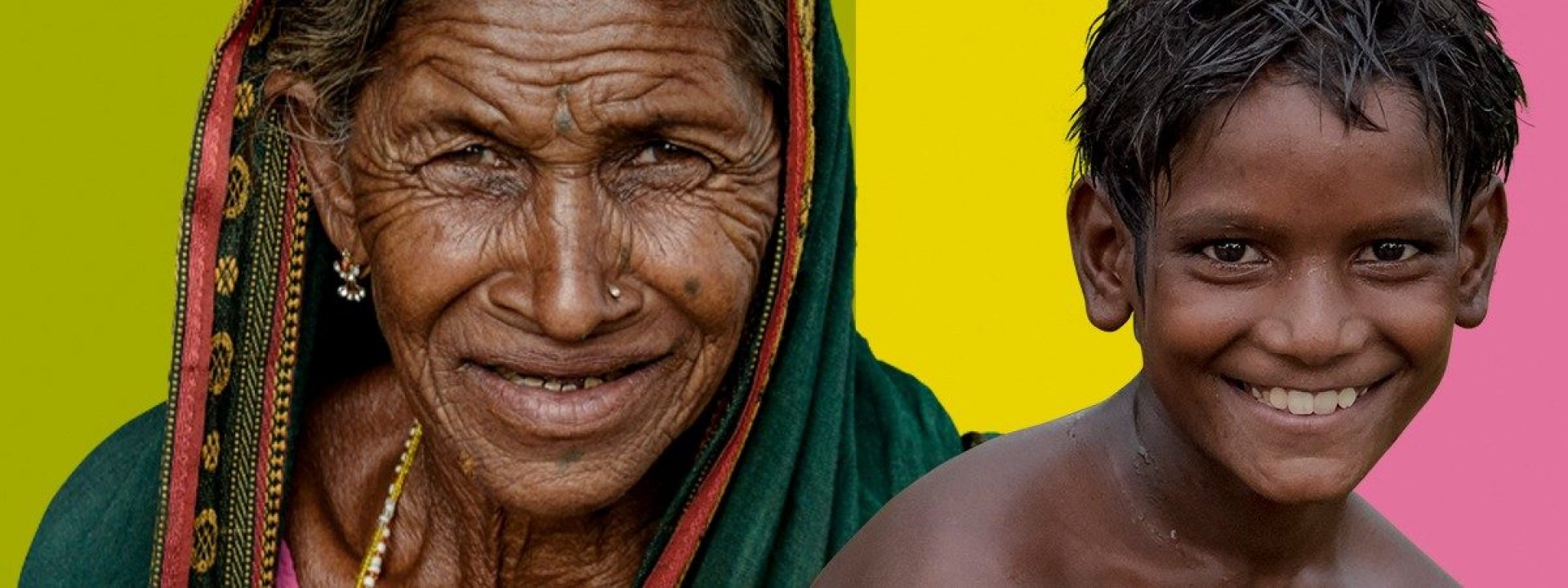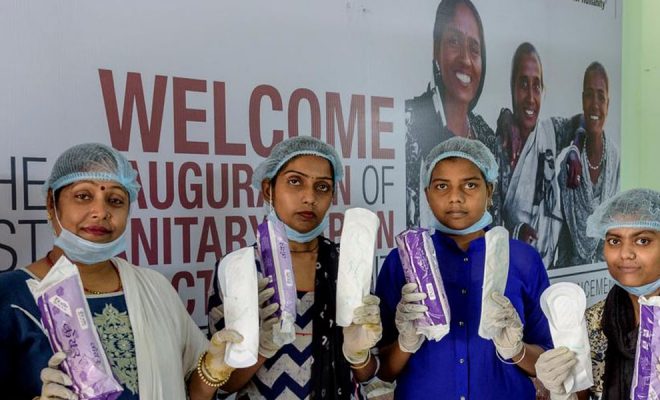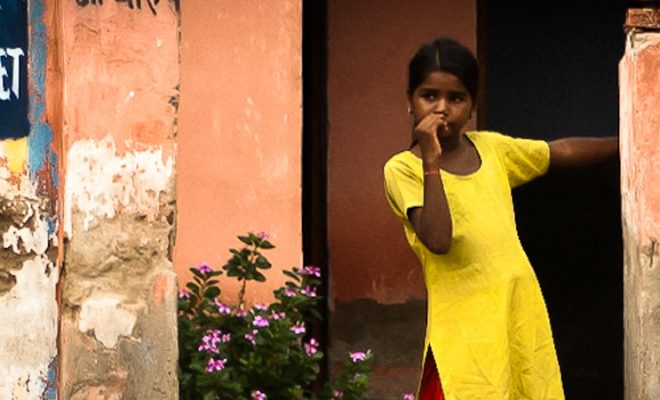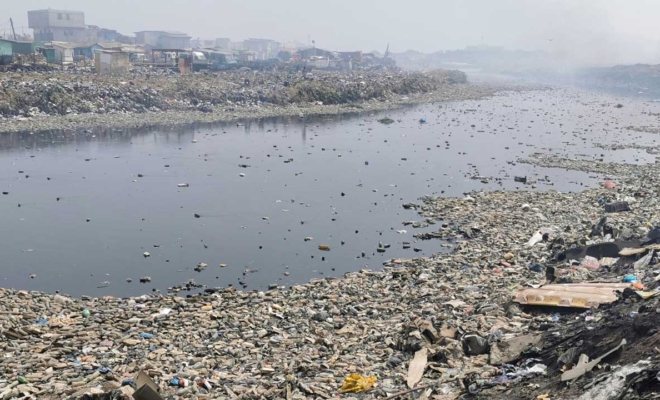
“I have a son named Narayanaswamy. His wife and children felt insecure and humiliated whenever they had to leave home to meet their needs.” Obuleso grew up in the village of P. Thimmapuram in the Indian state of Andhra Pradesh. He practiced open defecation in the fields near his home as a child. Over time, the increase in arable areas forced him to move farther and farther away to attend to his physiological needs. His family grew, and with it, the indignity of not having a simple latrine and having to defecate in the bushes far from his home.
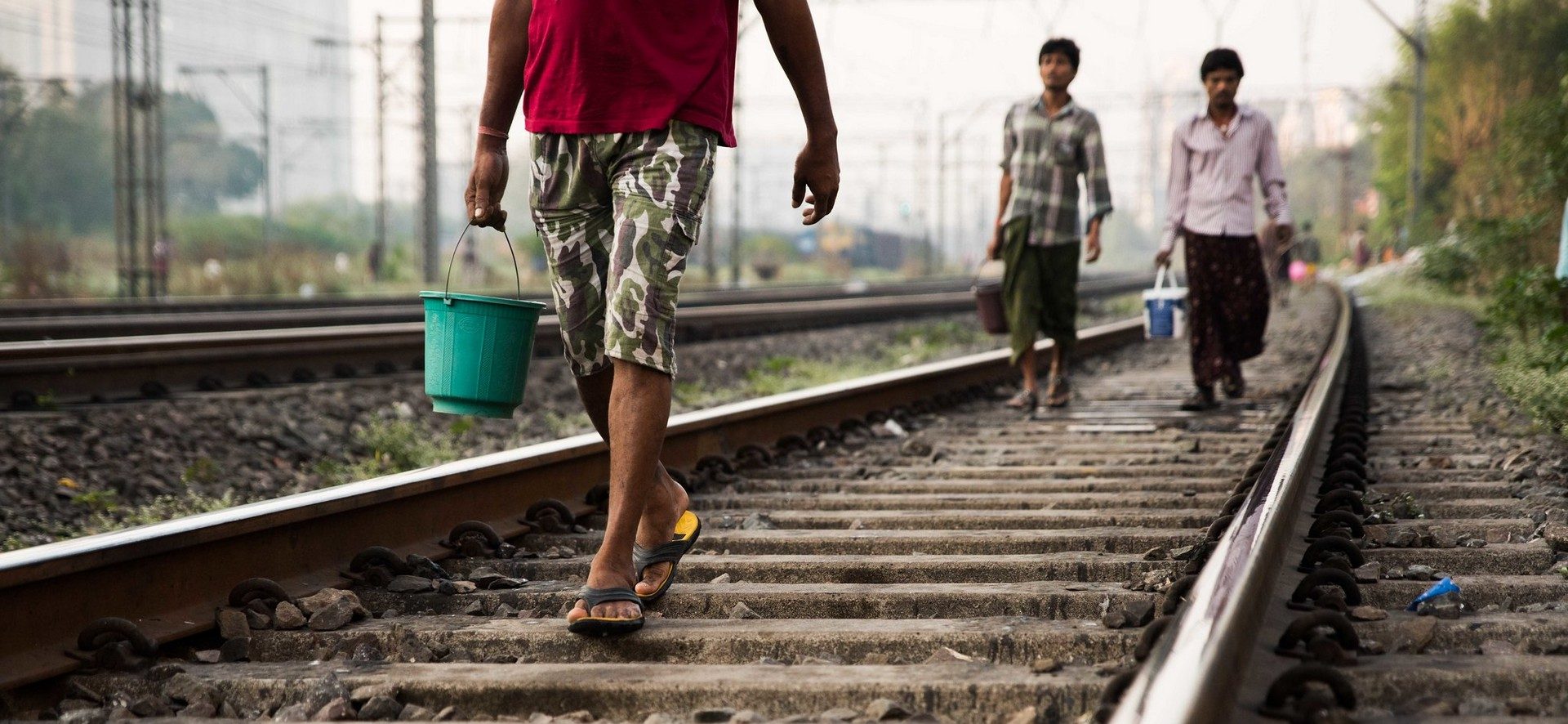
Eradicating the scourge of open defecation is an essential condition for the progress of any community.. © Sharada Prasad CS
Like Obuleso’s, 40 of the 50 families in the village had no latrines or toilets in or near their homes. With the project we have completed with the Vicente Ferrer Foundation, the entire community has eradicated open defecation; each household now has toilets with basic hygienic facilities.
The beneficiaries are part of the “Scheduled Castes, Scheduled Tribes,” as historically marginalized communities that have suffered discrimination and social exclusion are known in India.
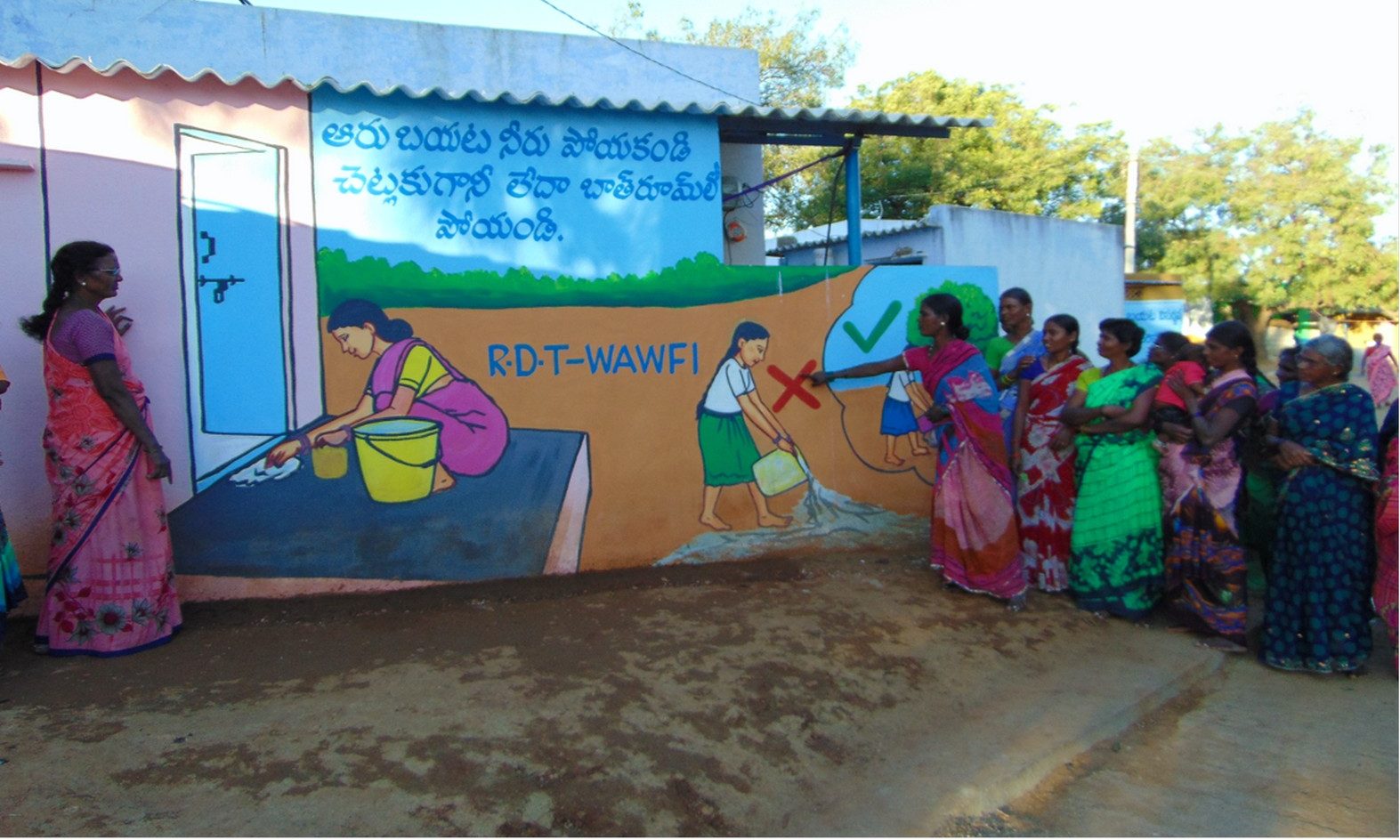
With the project we have completed with the Vicente Ferrer Foundation, the entire community has eradicated open defecation.
During the British colonial period, they were known as the “depressed classes.” Today they are sometimes referred to as Dalits or “untouchables” and are excluded from the four traditional varnas or castes.
This marginalized population, which constitutes between 15% and 18% of the country’s inhabitants, has suffered particularly from a lack of access to water and sanitation. Since independence, the Indian government has taken extraordinary measures to protect their rights and promote their welfare, but there are still large pockets of poverty and neglect.
The project’s outcome in P. Thimmapuram shows aspects that are not visible to the privileged sections of society who have always had full access to hygienic facilities. Venkatalakshmi, a village elder, recounts what it has meant for her not to have to leave her home to defecate in the open fields and to have water at home: “My husband and I had much difficulty in getting water and going outside to attend to our physiological needs. We were terrified to go to the bushes because of the presence of poisonous animals, especially in the mornings and evenings. My husband’s knees hurt, and it was excruciating for him. Now, we have a bathroom with a nice, decent toilet right next to our house; water is also available at the tap in our home. After so many years, the village looks very nice and clean to me now.”
The challenge in a country with over 1.425 billion inhabitants
In 2014, the Government of India undertook a massive project: the Swachh Bharat Abhiyan (Clean India Campaign). Its main objective was to eliminate open defecation and promote hygiene nationwide. According to JMP data, in 2015, 383 million Indians practiced defecation in fields, roads, and streets. According to reports, millions of toilets have been built across the country, and there has been a noticeable decrease in defecation without any sanitary control. The campaign succeeded in reducing that figure to 205 million by 2020, and there has also been an increase in hygiene awareness and social mobilization for behavioral change towards healthier practices. But there is still a long way to go.
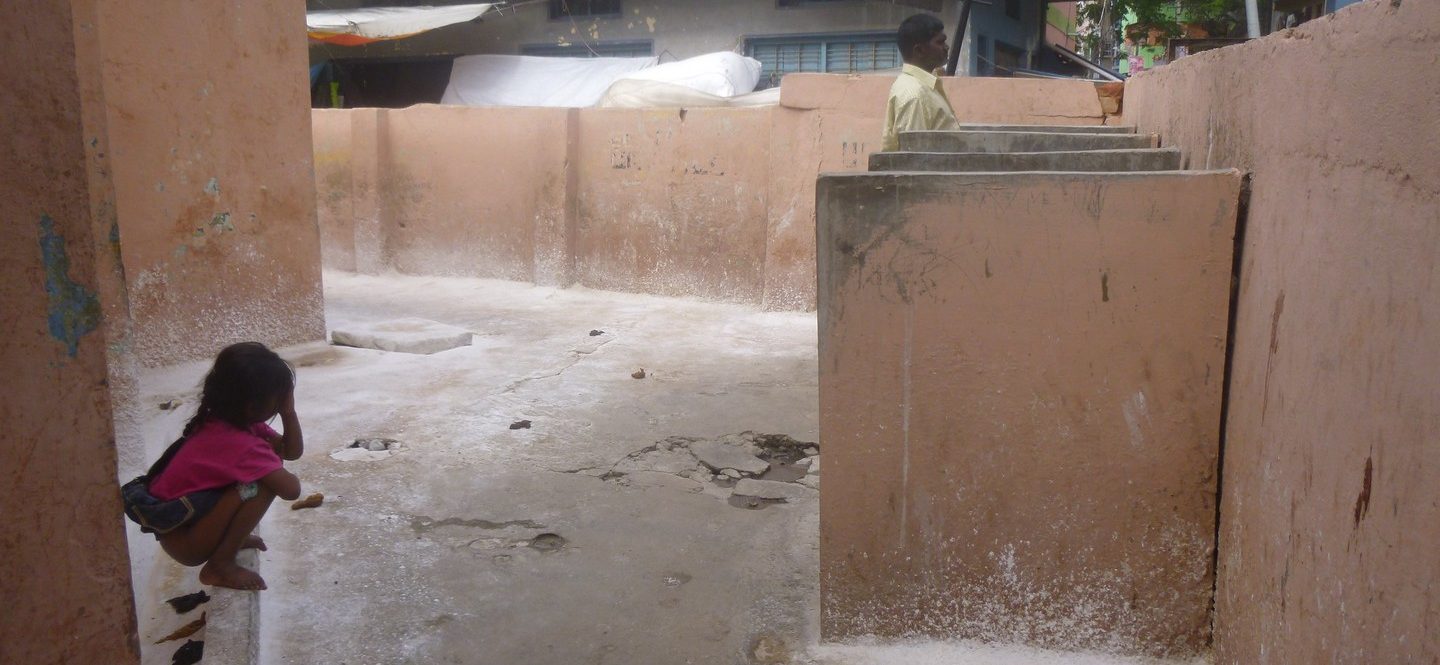
According to JMP data, in 2015, 383 million Indians practiced defecation in fields, roads, and streets.© SuSanA Secretariat
Among those who, for the time being, have been left out of the program’s reach are many communities in the most neglected rural areas, such as scheduled castes in villages like P. Thimmapuram. The world’s most populous country still has its rural communities burdened with numerous social taboos and centuries-old neglect; complete eradication of open defecation and hygiene promotion are costly goals that entail socioeconomic changes that are difficult to achieve in the short term.
Satisfaction is synonymous with sustainability
Of the 36 projects we have carried out in India, 19 have focused on access to sanitation; in total, more than 170,000 people have benefited. Our experience of more than 12 years corroborates the Swachh Bharat Abhiyan government monitoring reports and those of the NGOs with which we have been collaborating: the implementation of sanitation must be accompanied by cultural changes that affect not only the understanding of the importance of hygiene but also the eradication of taboos, especially those that hinder women and keep them away from education and empowerment.
The best guarantee that this will happen is the satisfaction communities derive from the benefits of having sanitation and hygiene facilities: the full participation of women in community management, the significant decrease in childhood illnesses, the improvement in school efficiency, the social cohesion provided by community participation in the facilities, and the dignity of not having to live surrounded by excreta.
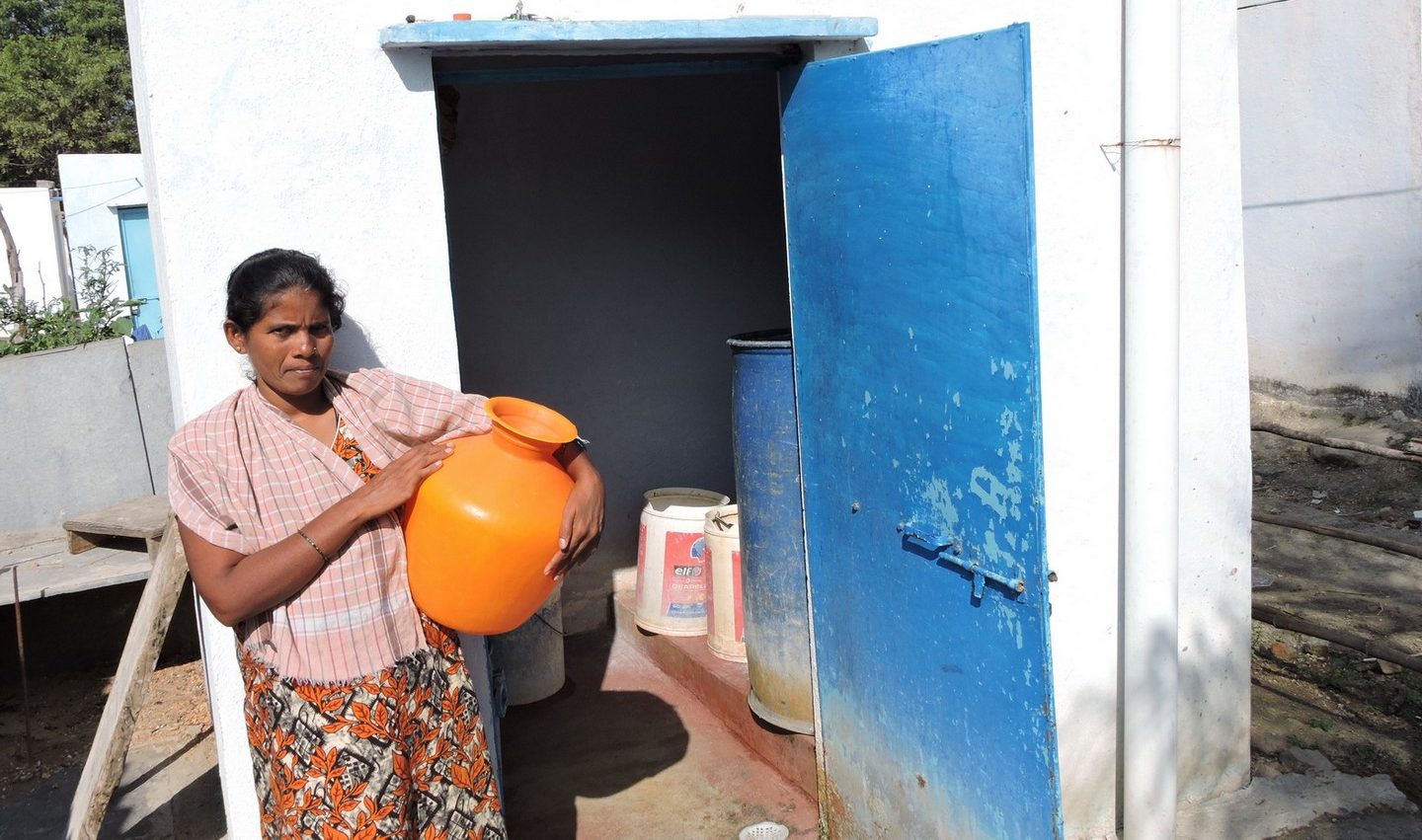
Of the 36 projects we have carried out in India, 19 have focused on access to sanitation; in total, more than 170,000 people have benefited.
“We feel we have another added value in our village. Neighboring villages are visiting us and appreciate this initiative,” declares the representative of the women’s community of Panchayat, the institution responsible for local administration and decision making in the village, which now can ensure a future with a comprehensive hygiene culture. The challenge is not just to get there but to stay there; the satisfaction of humble people is the best resource.


